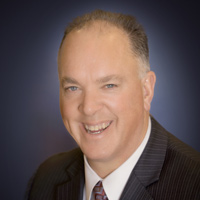Make Charitable Giving a Win-Win Part Of Your Wealth Plan
You can do a lot of good while getting a good tax break, but the details of the setup are important, and so is how you communicate your wishes to your heirs.


There are tremendous breaks and incentives written into the tax code for charitable giving, and you don’t have to be wealthy to take advantage of them. But they’re most successful for people who truly have a charitable bent — those who sincerely want to see some of their money go to the charity or charities they care about.
That’s because most charitable-giving strategies require a fair amount of planning, paperwork, and set-up and maintenance costs. The tax benefits being what they are, though, it’s worth the effort.
They include:
From just $107.88 $24.99 for Kiplinger Personal Finance
Become a smarter, better informed investor. Subscribe from just $107.88 $24.99, plus get up to 4 Special Issues

Sign up for Kiplinger’s Free Newsletters
Profit and prosper with the best of expert advice on investing, taxes, retirement, personal finance and more - straight to your e-mail.
Profit and prosper with the best of expert advice - straight to your e-mail.
- You can sell highly appreciated assets — real estate, stocks, etc. — within a trust and preserve the full fair-market value instead of losing money to capital gains taxes.
- When an asset is sold, there are income tax benefits upfront, based on the value of the gift you’re making to charity, and possibly in the future, depending on how the gift is set up and if it includes an income stream.
- Generally, once you set up your fund or trust, the value of the donated assets comes out of your estate, reducing the amount of money your estate must pay in taxes when you die. That’s helpful because while the exemption for federal income taxes on estates is $5.49 million, several states start taxing estates at limits much lower than that. Oregon’s estate tax, for example, kicks in at $1 million.
The biggest disadvantage to some of the more common forms of charitable giving is that you are, in a way, disinheriting your children. Basically, the charity gets their inheritance. But fear not: There are strategies for “re-inheriting” them — including using the income stream you’ve created within a trust to pay for life insurance premiums. So you can give to your favorite charity and still provide for your heirs — a win-win.
There are many kinds of charitable-giving vehicles: donor-advised funds, pooled-income funds, charitable trusts, life-estate agreements, private foundations and more. When making your choice, you’ll want to consider both the tax implications and how much flexibility you’ll have as a donor — especially if you’re the type of person who likes to have a say in how your money is spent.
It’s important to use a qualified financial professional who can help you plan out your finances, assets, allocations, legacy plans and charitable giving. Planning your finances the right way is vital and is not a do-it-yourself project. With much of your future riding on your income, relying on a professional with adequate experience is a must.
It’s also a good idea to communicate your wishes to your children or any other family members who might be affected by your plans. A conversation now could avoid turmoil down the road, especially if they are expecting to inherit specific assets.
For some families, philanthropy is a way of life, passed down from one generation to the next. But if it’s new to your family, you’ll want to be clear about what you’re doing and why.
Obviously, this is a complicated matter. If you’re considering making charitable giving part of your wealth plan, consult with a specialist — better yet, a team of specialists, including a financial professional, a tax attorney and an estate-planning attorney with experience in charitable contributions.
They can walk you through any complex legal matters, and around any obstacles that could get in the way of your success.
Kim Franke-Folstad contributed to this article.
Profit and prosper with the best of Kiplinger's advice on investing, taxes, retirement, personal finance and much more. Delivered daily. Enter your email in the box and click Sign Me Up.

Don Bergis is an Investment Adviser Representative (IAR) and the founder of Authentikos Advisory, a full-service fiduciary firm focused on the protection and growth of client assets toward and through retirement.
-
 What Science Reveals About Money and a Happy Retirement
What Science Reveals About Money and a Happy RetirementWhether you’re still planning or already retired, these research-based insights point the way to your best post-work life.
-
 7 Retirement Planning Trends: What They Mean for You in 2026
7 Retirement Planning Trends: What They Mean for You in 2026From government shutdowns to market swings, the past 12 months have been nothing if not eventful. The key trends can help you improve your own financial plan.
-
 What Defines Wealth? A Christmas Tale of Legacy vs Possession
What Defines Wealth? A Christmas Tale of Legacy vs PossessionThe tale of Good King Wenceslas shows that true wealth is built through generosity, relationships and the courage to act kindly no matter what.
-
 7 Retirement Planning Trends in 2025: What They Mean for Your Wealth in 2026
7 Retirement Planning Trends in 2025: What They Mean for Your Wealth in 2026From government shutdowns to market swings, the past 12 months have been nothing if not eventful. The key trends can help you improve your own financial plan.
-
 What Defines Wealth: Soul or Silver? Good King Wenceslas' Enduring Legacy in the Snow
What Defines Wealth: Soul or Silver? Good King Wenceslas' Enduring Legacy in the SnowThe tale of Good King Wenceslas shows that true wealth is built through generosity, relationships and the courage to act kindly no matter what.
-
 An Investing Pro's 5 Moves to Help Ensure 2025's Banner Year in the Markets Continues to Work Hard for You in 2026
An Investing Pro's 5 Moves to Help Ensure 2025's Banner Year in the Markets Continues to Work Hard for You in 2026After a strong 2025 in the stock market, be strategic by rebalancing, re-investing with a clear purpose and keeping a disciplined focus on your long-term goals.
-
 Introducing Your CD's Edgier Cousin: The Market-Linked CD
Introducing Your CD's Edgier Cousin: The Market-Linked CDTraditional CDs are a safe option for savers, but they don't always beat inflation. Should you try their counterparts, market-linked CDs, for better returns?
-
 How to Protect Yourself and Others From a Troubled Adult Child: A Lesson from Real Life
How to Protect Yourself and Others From a Troubled Adult Child: A Lesson from Real LifeThis case of a violent adult son whose parents are in denial is an example of the extreme risks some parents face if they neglect essential safety precautions.
-
 To Build Client Relationships That Last, Embrace Simplicity
To Build Client Relationships That Last, Embrace SimplicityAs more automation becomes the norm, you can distinguish yourself as a financial professional by using technology wisely and prioritizing personal touches.
-
 Client Demand Is Forcing Financial Advisers to Specialize: How to Deliver
Client Demand Is Forcing Financial Advisers to Specialize: How to DeliverThe complexity of wealthy clients' needs — combined with AI and consumer demand — suggests the future of financial planning belongs to specialized experts.
-
 A Financial Planner Takes a Deep Dive Into How Charitable Trusts Benefit You and Your Favorite Charities
A Financial Planner Takes a Deep Dive Into How Charitable Trusts Benefit You and Your Favorite CharitiesThese dual-purpose tools let affluent families combine philanthropic goals with advanced tax planning to generate income, reduce estate taxes and preserve wealth.